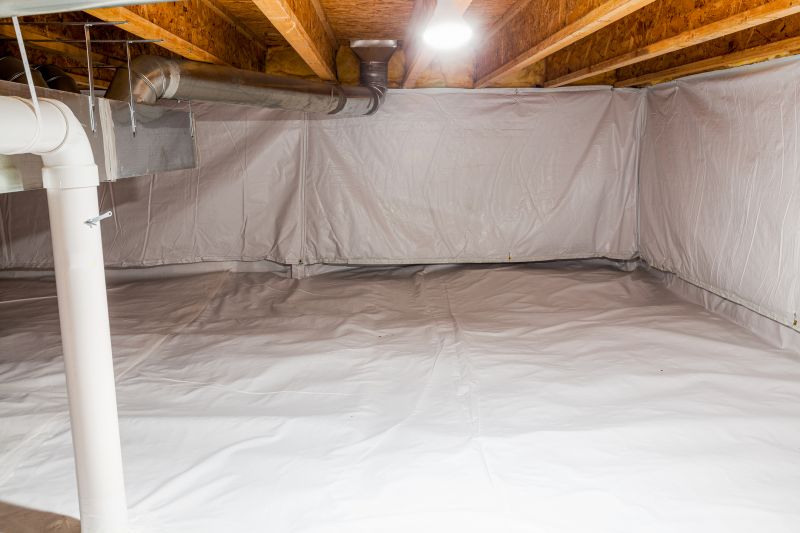Transform Your Crawlspace into a Dry Space
Crawlspace encapsulation is a comprehensive process that involves sealing and insulating a home's crawlspace to improve indoor air quality, prevent moisture issues, and enhance energy efficiency. Proper encapsulation can significantly reduce the risk of mold growth, pest infestation, and structural damage caused by moisture intrusion.
Encapsulation prevents excess moisture from entering the crawlspace, reducing the risk of mold and wood rot that can compromise the structural integrity of the home.
Sealing the crawlspace minimizes air leaks, leading to lower energy bills and more consistent indoor temperatures.
Encapsulation reduces the entry of mold spores, dust, and allergens into the living space, promoting healthier indoor environments.
A sealed crawlspace deters pests such as rodents and insects from nesting and entering the home.

A finished crawlspace with sealed vapor barriers, insulation, and proper ventilation.

Close-up of vapor barrier installation showing a clean, sealed environment.

Insulation installed along the walls and floor for thermal efficiency.

Vents sealed with covers to prevent moisture ingress while allowing airflow where needed.
Failure to encapsulate a crawlspace can lead to serious issues, including increased energy costs, mold growth, and structural deterioration. Studies show that unsealed crawlspaces can contribute to indoor humidity levels that promote mold and dust mite proliferation, impacting health and comfort. Additionally, moisture problems can cause wood rot and attract pests, leading to costly repairs and compromised home safety.
| Benefit | Impact |
|---|---|
| Moisture Reduction | Prevents mold growth and wood rot, maintaining structural integrity. |
| Energy Savings | Reduces heating and cooling costs through better insulation and sealing. |
| Health Improvement | Minimizes allergens and mold spores in indoor air. |
| Pest Control | Limits access points for rodents and insects. |
| Property Value | Enhances home value by improving overall condition. |
| Home Comfort | Provides more consistent indoor temperatures. |
| Structural Preservation | Protects foundation and framing from moisture damage. |
| Air Quality | Reduces indoor pollutants caused by mold and dust. |

